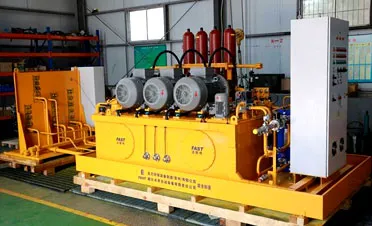aluminum die casting components
Aluminum Die Casting Components A Comprehensive Overview
Aluminum die casting components play a crucial role in numerous industries, including automotive, aerospace, electronics, and consumer goods. This manufacturing process involves forcing molten aluminum into a mold cavity under high pressure, creating precisely shaped parts that are both lightweight and strong. Given the increasing demand for high-performance components, the popularity of aluminum die casting has surged in recent years.
One of the primary advantages of aluminum die casting is the material's inherent properties. Aluminum is known for its excellent strength-to-weight ratio, corrosion resistance, and thermal conductivity. These qualities make it an ideal choice for components that require durability without adding substantial weight. Furthermore, aluminum die casting components can be manufactured with intricate designs and tight tolerances, which is essential for applications that require high precision and reliability.
The aluminum die casting process typically involves several stages. Initially, aluminum alloy is melted in a furnace to reach the required temperature for casting. Once molten, the aluminum is injected into a steel mold, which has been carefully designed to replicate the desired shape of the component. After the metal fills the mold, it cools and solidifies, forming a component that is nearly identical to the mold's cavity.
The advantages of aluminum die casting extend beyond just material properties and manufacturing efficiency. The process allows for high-volume production, leading to reduced lead times and lower costs per unit. This efficiency is particularly beneficial for industries that require large quantities of components that can be produced quickly without sacrificing quality. Additionally, the die casting process minimizes waste, making it an environmentally friendly option compared to other manufacturing methods.
aluminum die casting components

However, designers and engineers must consider certain factors when specifying aluminum die casting components. The design must accommodate for potential defects such as porosity, which can occur due to trapped gases or impurities in the molten metal. Proper mold design and process control are essential to minimize these defects and ensure the integrity of the final product. Engineers often use simulation software to predict how the molten metal will flow into the mold, allowing for optimization of the design before physical production begins.
Furthermore, the choice of aluminum alloy can significantly influence the performance characteristics of the cast component. Common aluminum alloys used for die casting include 380, 383, and 413, each offering distinct benefits such as enhanced strength or improved fluidity during the casting process. Selecting the appropriate alloy is vital for meeting the specific requirements of the application while also balancing factors such as cost and manufacturability.
Post-processing operations may also be necessary to enhance the performance or appearance of aluminum die casting components. Techniques such as machining, surface finishing, anodizing, and coating can be applied to improve properties like surface roughness, corrosion resistance, and aesthetic appeal. These additional steps can be tailored to meet the unique needs of each project, providing further customization and value.
The market for aluminum die casting components is projected to continue growing, driven by advancements in technology and increasing demand for lightweight materials. Applications in electric vehicles, for instance, require components that not only reduce weight but also provide excellent performance under challenging conditions. As industries evolve, manufacturers that can provide high-quality aluminum die casting components with enhanced properties will play a vital role in meeting these new demands.
In conclusion, aluminum die casting components offer a multitude of advantages, making them a preferred choice across various sectors. Their lightweight, durable nature, coupled with the efficiency of the die casting process, allows for the production of complex parts at scale. As technology continues to advance, the potential applications and capabilities of aluminum die casting are only set to expand, positioning this manufacturing method as a critical component of modern production strategies. Whether for automotive, aerospace, or consumer applications, aluminum die casting will undoubtedly remain a key player in the fight for performance and sustainability in engineering solutions.
-
OEM Sand Cast Pump Valve Fittings - Baoding Hairun | Precision Engineering, CustomizableNewsJul.30,2025
-
OEM Sand Cast Pump Valve Fittings - Baoding Hairun Machinery And Equipment Trading Co., Ltd.NewsJul.30,2025
-
OEM Sand Cast Pump Valve Fittings - Baoding Hairun Machinery And Equipment Trading Co., Ltd.NewsJul.30,2025
-
OEM Sand Cast Pump Valve Fittings - Baoding Hairun Machinery|Precision Engineering&Fluid ControlNewsJul.30,2025
-
OEM Sand Cast Pump Valve Fittings - Baoding Hairun Machinery And Equipment Trading Co., Ltd.NewsJul.30,2025
-
OEM Sand Cast Pump Valve Fittings-Baoding Hairun Machinery And Equipment Trading Co., Ltd.NewsJul.30,2025















